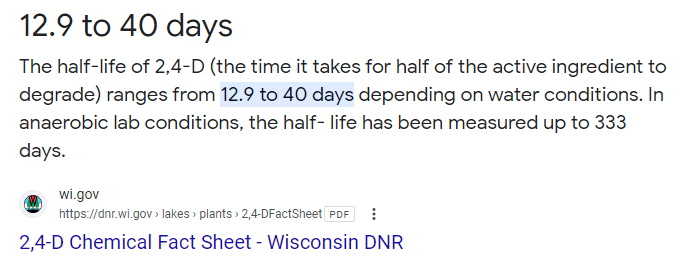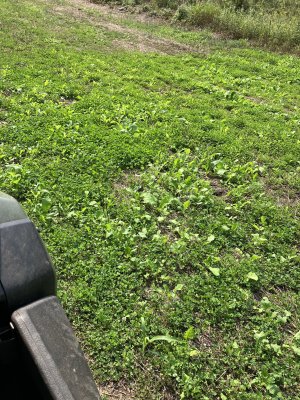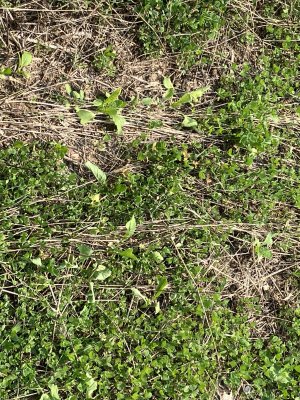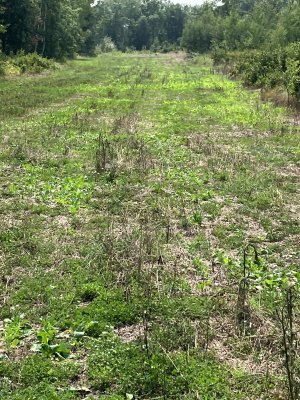Wind Gypsy
5 year old buck +
So....I was re-reading this thread and examined the "Cover Crop Termination" paper(s) written by Michigan State (above). One of the few "Excellent" combinations to kill clover is a mix of Glyphosate (.75 lb a.i.) missed with Diacamba (.5 lb a.i.).
I do not see any planting restrictions with this mix. I am totally unfamiliar with Diacamba. What are some brand names? Expensive?? Not sure Dicamba is a better choice than 24-D Amine.....but the U of Michigan seems to think so. Worried about plant back time. Trying to have little impact after one week. Also.....how many oz of each to equal the lbs stated of active ingredients??? Kinda confusing.
Kinda been thinking I could use 2 Qt / acre 41% Glyphosate and a Pint of 24-d /acre. Add a little Nitro Surf. Thanks for any help here.
My current plan is to spray some 5 to 10 foot wide strips of clover cover/rye cover crops........then a week or so later drill my brassica mix (possibly others) into these strips......and follow very soon after planting with my roller crimper to all areas to form a mulch on top of the new brassica crop.
I need to solidify a burn down mix......and that paper from Michigan State has fair data on the chemicals......IMO.
Where have you seen that brassicas are safe 7 days after spraying with 2,4-d? I’ve seen where soybeans are said to not be safe til 14 days after and some others are much longer. I do have a handful of stuff I’m not sure gly will wipe out but I’ve been hesitant to go 2,4-d because I wanted to plant sooner after burn down.





